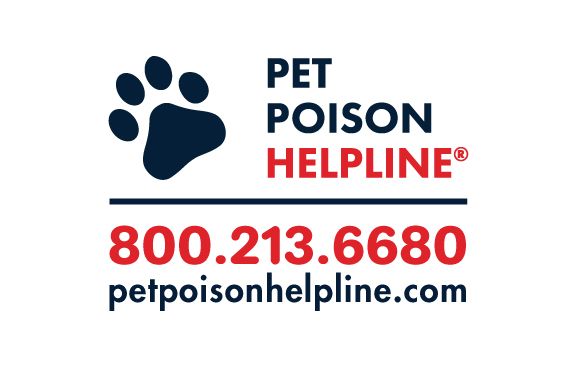
Honoring Presidents Day with toxin awareness

Pet Poison Helpline presented the Mount Rushmore of Toxin Tails to bring awareness this Presidents Day
In recognition of President’s Day, Pet Poison Helpline used its latest installment of Toxin Tails to bring awareness to toxins by highlighting cases where the pet shared a name with a President of the United States, like Washington, a German Shepard mix from Bend, Oregon.
Washington
Like the president he shares a name with, who loved chocolate and once ordered 50 pounds of it,2 Washington helped himself to some of the chocolate candy that his owner Sarah Pringle, and her family kept next to their coffee machine.
“[The individually wrapped chocolates] had been there for months, but for some reason Washington decided he wanted a snack and individually unwrapped each chocolate before eating them. We knew chocolate was dangerous to pets, so we called the Pet Poison Helpline. Fortunately, the toxicologist who assisted us told us that based on Washington’s size and type of chocolate ingested, he didn’t eat enough to require treatment. If he had been a small dog, however, it would have been a different story. He ended up being fine, but it was still scary,” said Pringle, in an organizational release.1
Chocolate poisonings are common in dogs because chocolate is something that can be easy for them to get into, depending on their home life. When a dog ingests chocolate, their bodies cannot metabolize it the way a human can. Dogs that eat chocolate are ingesting caffeine and theobromine, the 2 toxic components for dogs, that cause stimulation of the central nervous center and heart and can act as diuretics.3 The severity of the diagnosis depends on how much the dog ingested, and what kind because darker and more bitter chocolates are the most toxic, and symptoms can begin within 2-12 hours and last up to 12-36, sometimes longer. Signs of poisoning include restlessness, vomiting, increased thirst, abnormal heart rhythms, tremors, diarrhea, elevated heart rate, hyperactivity, diarrhea, tremors, and hyperthermia.1,3
Jefferson
Jefferson, a golden retriever, was treated recently for THC poisoning after his owner thought he was giving him CBD gummies. Pure CBD is not expected to be a concern in pets because it has no psychoactive properties so it cannot cause neurological signs in pets or get them high. Pets brought into the clinic suspected of suffering a THC poisoning will have lethargy, weakness, ataxia, unresponsiveness, hypotension, bradycardia, and urinary incontinence.1 Most pets will recover but increased sensitivity to THC can result in life-threatening signs that can require the veterinarian to propose aggressive medical care.
“Thomas Jefferson grew hemp at Monticello,” said Renee Schmid, DVM, DABT, DABVT, a senior veterinary toxicologist at Pet Poison Helpline, in the organizational release.1,4 “It is only fitting that a golden retriever named Jefferson was recently treated for eating what his owner thought were CBD gummies, but his symptoms were more consistent with THC poisoning. It’s possible that the product was contaminated, or perhaps the gummies were in fact THC and the owner was unaware. As more states legalize medical and recreational cannabis, the more marijuana-related calls we are receiving for both THC and CBD. In fact, marijuana ranked sixth on our top 10 pet toxins of 2023.”
Teddy
Teddy, a cat from New York, ingested an unknown amount of laundry detergent when his family’s backs were turned. Cats who have ingested laundry detergents can also present with burns in their mouth or pawing at their mouth but one of the biggest concerns is if the pet will develop aspiration pneumonitis.5 Teddy’s family brought him to the clinic after he started vomiting and showing signs of respiratory irritation. The Pet Poison Helpline team recommended the veterinary team use anti-emetic, IV fluids, chest radiographs, sedation, and oxygen therapy. In Teddy’s case, he received lifesaving care and was able to recover and return home to his family.
“Cats are very sensitive to the surfactants and cationic detergents in laundry detergent with oral and esophageal lesions, vomiting, mouth pain, and aspiration occurring, which can lead to severe respiratory distress,” explained Schmid.1
Lincoln
Finally, Lincoln, a Portuguese water dog from Michigan, made the Mount Rushmore of Toxin Tails after he ingested 100 chews of a supplement designed to prevent grass scalding from pet urine. The chews contained DL-methionine which caused Lincoln to overdose. An overdose of DL-methionine can cause abdominal pain, ataxia, coma, metabolic acidosis, seizures, tremors, and vomiting. Lincoln developed neurologic signs and vomiting but he was treated by a veterinarian with help from the Pet Poison Helpline and made a full recovery.1
References
- Move over Mount Rushmore. News release. Pet Poison Helpline, February 15, 2024. Accessed February 19, 2024.
- The Washingtons and chocolate. George Washington’s Mount Vernon. Accessed February 19, 2024. https://www.mountvernon.org/inn/recipes/the-washingtons-and-chocolate/
- Chocolate toxicity: What should I do if my dog eats chocolate? Cornell University College of Veterinary Medicine. Published October 24, 2023. Accessed February 19, 2024. https://www.vet.cornell.edu/departments/riney-canine-health-center/canine-health-information/chocolate-toxicity-what-should-i-do-if-my-dog-eats-chocolate
- Some of my finest hours have been spent on my back veranda, smoking hemp... (Spurious Quotation). Monticello. Accessed February 19, 2024.
- Understanding and treating laundry detergent ingestion. ASPCApro. Published August 25, 2017. Accessed February 19, 2024. https://www.aspcapro.org/resource/understanding-and-treating-laundry-detergent-ingestion
Newsletter
From exam room tips to practice management insights, get trusted veterinary news delivered straight to your inbox—subscribe to dvm360.






